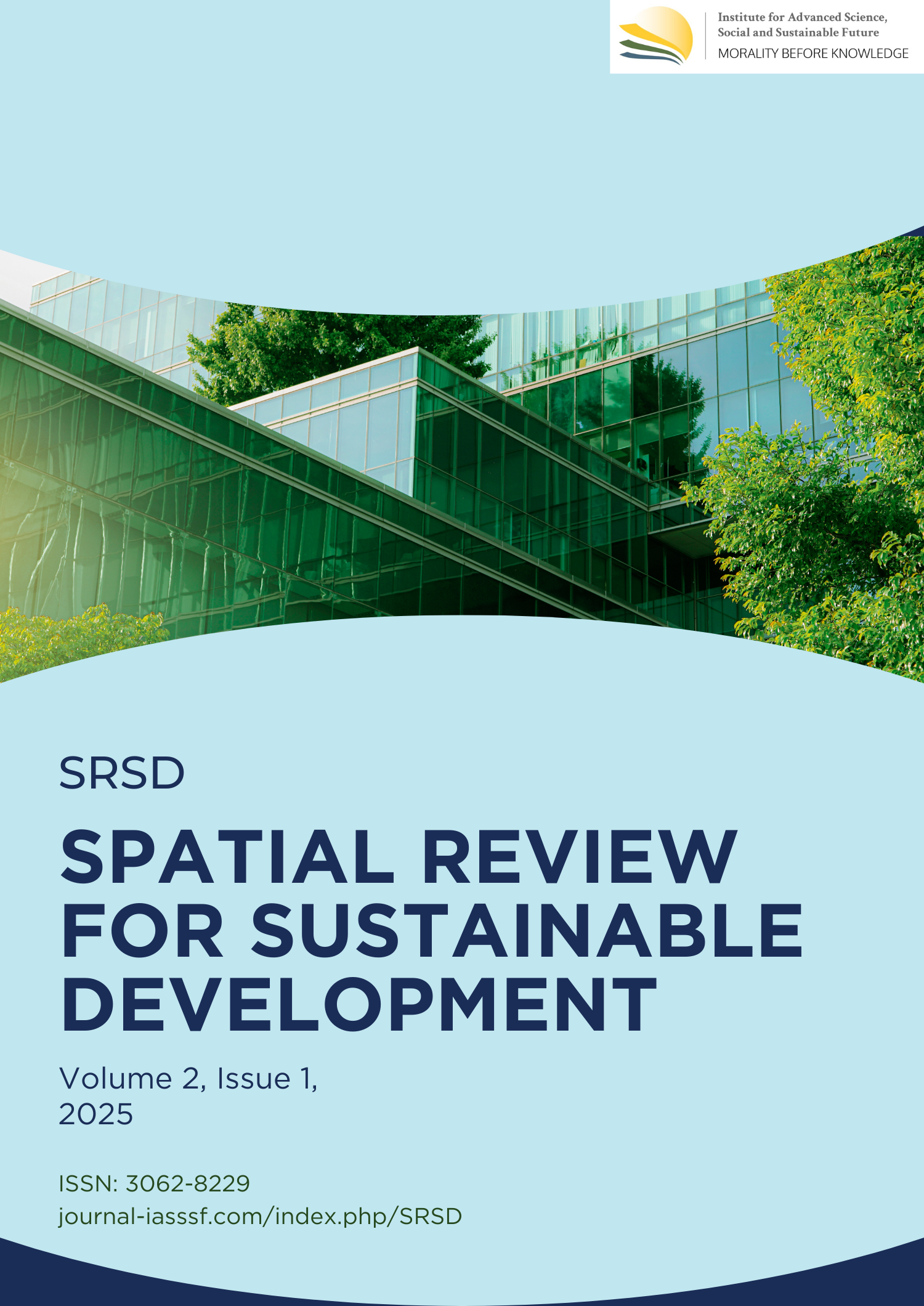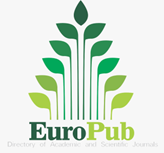Community-integrated carbon trading: A pathway to environmental conservation and economic sustainability
DOI:
https://doi.org/10.61511/srsd.v2i1.2025.1701Keywords:
climate change, carbon emission, local communities, carbon trading initiatives, REDD+Abstract
Background: Severe climate change demands urgent global action, emphasizing the need for innovative strategies to mitigate climate change and reduce carbon emissions. Central to these efforts is the reduction of emissions from deforestation and forest degradation. Engaging local communities in carbon trading initiatives plays a pivotal role in achieving sustainability, empowering them to contribute to climate change mitigation and promoting the adoption of renewable energy. Method: This study adopts the PSALSAR framework, which integrates PRISMA and SALSA, to conduct a systematic literature reflection on local community empowerment through carbon trading initiatives. The process includes six main stages: Protocol, Search, Appraisal, Synthesis, Analysis, and Report. The study refers to sources from the Verra Registry, focusing on the AFOLU (Agriculture, Forestry and Other Land Use) project category, and uses the PICOC framework to ensure research relevance. Findings: Carbon trading initiatives, such as the Blue Carbon Project in Colombia, the Kuamut Rainforest Conservation Project in Malaysia, and the Plum Project in Indonesia, focus on reducing emissions while empowering local communities. These initiatives promote sustainable practices and economic opportunities, aligning with broader sustainable development goals. The study reveals that integrating community empowerment with environmental conservation can lead to emission reductions, economic growth, and biodiversity preservation. Successful implementation requires collaborative partnerships and effective policy integration. Conclusion: Empowering local communities through carbon trading initiatives brings positive impacts across economic, cultural, environmental, and social domains. These initiatives highlight the importance of community involvement and collaboration among stakeholders for achieving sustainability. The study calls for further exploration of challenges and future research directions, emphasizing the transformative potential of community empowerment in carbon trading for a more sustainable future. Novelty/Originality of this article: It emphasizes the integration of environmental conservation with community-driven economic opportunities, demonstrating the transformative potential of such initiatives for sustainable development.
References
Abadie, A., Chowdhury, S., Mangla, S. K., & Malik, S. (2024). Impact of carbon offset perceptions on greenwashing: Revealing intentions and strategies through an experimental approach. Industrial Marketing Management, 117, 304–320. https://doi.org/10.1016/j.indmarman.2024.01.001
Cardona, J. B. (2021). CCB & VCS Project Description: CCB Version 3, VCS Version 3—Blue Carbon Project Gulf of Morrosquillo “Vida Manglar”. Verra Registry. https://registry.verra.org/app/projectDetail/CCB/2290
Chen, L., Msigwa, G., Yang, M., Osman, A. I., Fawzy, S., Rooney, D. W., & Yap, P. S. (2022). Strategies to achieve a carbon neutral society: a review. In Environmental Chemistry Letters. Springer Science and Business Media Deutschland GmbH. 20(4), 2277-2310. https://doi.org/10.1007/s10311-022-01435-8
Chen, X., & Lin, B. (2021). Towards carbon neutrality by implementing carbon emissions trading scheme: Policy evaluation in China. Energy Policy, 157. https://doi.org/10.1016/j.enpol.2021.112510
Cullenward, D., Badgley, G., & Chay, F. (2023). Carbon offsets are incompatible with the Paris Agreement. In One Earth Cell Press, 6(9), 1085-1088 https://doi.org/10.1016/j.oneear.2023.08.014
Delma, S., Gilmour, D., Ota, L. S., Warner, K., Temphel, K. J., & Herbohn, J. (2024). Carbon stocks and sequestration potential of community forests in Bhutan. Trees, Forests and People, 16. https://doi.org/10.1016/j.tfp.2024.100530
Gatiso, T. T., Kulik, L., Bachmann, M., Bonn, A., Bösch, L., Freytag, A., Heurich, M., Wesche, K., Winter, M., Ordaz-Németh, I., Sop, T., & Kühl, H. S. (2022). Sustainable protected areas: Synergies between biodiversity conservation and socioeconomic development. People and Nature, 4(4), 893–903. https://doi.org/10.1002/pan3.10326
Gonçalves, V. K. (2022). Carbon offset from the Amazon forest to compensate aviation emissions: Global solution, local struggles. Earth System Governance, 14. https://doi.org/10.1016/j.esg.2022.100160
Herr, D., Blum, J., Himes-Cornell, A., & Sutton-Grier, A. (2019). An analysis of the potential positive and negative livelihood impacts of coastal carbon offset projects. Journal of Environmental Management, 235, 463–479. https://doi.org/10.1016/j.jenvman.2019.01.067
Huang, L., Kelly, S., Shi, X., Lv, K., Lu, X., & Giurco, D. (2022). Maximizing the effectiveness of carbon emissions abatement in China across carbon communities. Energy Economics, 106. https://doi.org/10.1016/j.eneco.2021.105801
Indrajaya, Y., Weikard, H. P., Mohren, F., & van der Werf, E. (2024). Paying for forest carbon: Cost-effectiveness of the Verified Carbon Standard (VCS) remuneration scheme. Natural Resource Modeling, 37(1). https://doi.org/10.1111/nrm.12387
Irama, A. B. (2020). Perdagangan karbon di Indonesia: Kajian kelembagaan dan keuangan negara. Jurnal Info Artha, 4(1), 83–102. https://doi.org/10.31092/JIA.V4I1.741
Islam, M. R., Jönsson, A. M., Bergkvist, J., Lagergren, F., Lindeskog, M., Mölder, M., Scholze, M., & Kljun, N. (2024). Projected effects of climate change and forest management on carbon fluxes and biomass of a boreal forest. Agricultural and Forest Meteorology, 349. https://doi.org/10.1016/j.agrformet.2024.109959
Li, F., Guo, Y., & Liu, B. (2024). Impact of government subsidies and carbon inclusion mechanism on carbon emission reduction and consumption willingness in low-carbon supply chain. Journal of Cleaner Production, 449. https://doi.org/10.1016/j.jclepro.2024.141783
Li, Z., Wang, J., & Che, S. (2021). Synergistic effect of carbon trading scheme on carbon dioxide and atmospheric pollutants. Sustainability (Switzerland), 13(10). https://doi.org/10.3390/su13105403
Liu, Y., Dong, K., Wang, J., & Taghizadeh-Hesary, F. (2023). Towards sustainable development goals: Does common prosperity contradict carbon reduction? Economic Analysis and Policy, 79, 70–88. https://doi.org/10.1016/j.eap.2023.06.002
Markantoni, M., & Aitken, M. (2016). Getting low-carbon governance right: learning from actors involved in Community Benefits. Local Environment, 21(8), 969–990. https://doi.org/10.1080/13549839.2015.1058769
Meitern, M. (2024). Unlocking carbon finance: Empowering energy communities for mutual benefit. Renewable and Sustainable Energy Reviews, 199. https://doi.org/10.1016/j.rser.2024.114499
Mengist, W., Soromessa, T., & Legese, G. (2020). Ecosystem services research in mountainous regions: A systematic literature review on current knowledge and research gaps. In Science of the Total Environment Elsevier B.V, 702 https://doi.org/10.1016/j.scitotenv.2019.134581
Miles, W. B. (2021). The invisible commodity: Local experiences with forest carbon offsetting in Indonesia. Environment and Planning E: Nature and Space, 4(2), 499–524. https://doi.org/10.1177/2514848620905235
Nero, B. F., & Opoku, J. (2022). Topography alters stand structure, carbon stocks and understorey species composition of Cedrela odorata plantation, in a semi-deciduous forest zone, Ghana. Trees, Forests and People, 10. https://doi.org/10.1016/j.tfp.2022.100352
Nie, X., Chen, Z., Yang, L., Wang, Q., He, J., Qin, H., & Wang, H. (2022). Impact of Carbon Trading System on Green Economic Growth in China. Land, 11(8). https://doi.org/10.3390/land11081199
Permian Global. (2023). CCB & VCS Project Description: CCB Version 3, VCS Version 3 Kuamut Rainforest Conservation Project. Verra Registry. https://registry.verra.org/app/projectDetail/CCB/2609
PT Pagatan Usaha Makmur. (2024). CCB & VCS Project Description: CCB Version 3, VCS Version 3. PLUM Peat and Mangrove Conservation and Restoration Project (PLUM Project). Verra Registry. https://registry.verra.org/app/projectDetail/VCS/4967
Qin, J., Ou, D., Gao, X., Yang, Z., Zhong, Y., Yang, W., Wu, J., Yang, Y., Liu, Y., Sun, J., Deng, O., & Xia, J. (2024). Synergizing economic growth and carbon emission reduction in China: A path to coupling the MFLP and PLUS models for optimizing the territorial spatial functional pattern. Science of The Total Environment, 171926. https://doi.org/10.1016/j.scitotenv.2024.171926
Quinton, J., & Nesbitt, L. (2024). Different names for the same thing? A systematic review of green, environmental, eco-, ecological, climate, carbon, and resilience gentrification. Cities, 151. https://doi.org/10.1016/j.cities.2024.105107
Rachmaniar, A., Supriyadi, A. P., Pradana, H., & Mustriadhi. (2021). Carbon trading system as a climate mitigation scheme: Why Indonesia should adopt it? IOP Conference Series: Earth and Environmental Science, 739(1). https://doi.org/10.1088/1755-1315/739/1/012015
Saraji, M. K., & Streimikiene, D. (2023). Challenges to the low carbon energy transition: A systematic literature review and research agenda. In Energy Strategy Reviews Elsevier Ltd, 49. https://doi.org/10.1016/j.esr.2023.101163
Senadheera, D. K. L., Wahala, W. M. P. S. B., & Weragoda, S. (2019). Livelihood and ecosystem benefits of carbon credits through rainforests: A case study of Hiniduma Bio-link, Sri Lanka. Ecosystem Services, 37. https://doi.org/10.1016/j.ecoser.2019.100933
Shi, B., Li, N., Gao, Q., & Li, G. (2022). Market incentives, carbon quota allocation and carbon emission reduction: Evidence from China’s carbon trading pilot policy. Journal of Environmental Management, 319. https://doi.org/10.1016/j.jenvman.2022.115650
Shinbrot, X. A., Holmes, I., Gauthier, M., Tschakert, P., Wilkins, Z., Baragón, L., Opúa, B., & Potvin, C. (2022). Natural and financial impacts of payments for forest carbon offset: A 14 year-long case study in an indigenous community in Panama. Land Use Policy, 115. https://doi.org/10.1016/j.landusepol.2022.106047
Siksnelyte-Butkiene, I., Streimikiene, D., Lekavicius, V., & Balezentis, T. (2021). Energy poverty indicators: A systematic literature review and comprehensive analysis of integrity. Sustainable Cities and Society, 67. https://doi.org/10.1016/j.scs.2021.102756
Sovacool, B. K., Griffiths, S., Kim, J., & Bazilian, M. (2021). Climate change and industrial F-gases: A critical and systematic review of developments, sociotechnical systems and policy options for reducing synthetic greenhouse gas emissions. In Renewable and Sustainable Energy Review Elsevier Ltd. 141. https://doi.org/10.1016/j.rser.2021.110759
Szetey, K., Moallemi, E. A., Ashton, E., Butcher, M., Sprunt, B., & Bryan, B. A. (2021). Participatory planning for local sustainability guided by the Sustainable Development Goals. Ecology and Society, 26(3). https://doi.org/10.5751/es-12566-260316
Wahyudi, A. J., Hernawan, U. E., Alifatri, L. O., Prayudha, B., Sani, S. Y., Febriani, F., & Ulumuddin, Y. I. (2022). Carbon-offset potential from tropical seagrass conservation in selected areas of Indonesia. Marine Pollution Bulletin, 178. https://doi.org/10.1016/j.marpolbul.2022.113605
Wei, J., Zhao, K., Zhang, L., Yang, R., & Wang, M. (2021). Exploring development and evolutionary trends in carbon offset research: A bibliometric perspective. Environmental Science and Pollution Research International, 28(15), 18850–18869. https://doi.org/10.1007/s11356-021-12908-8
Wen, S., & Jia, Z. (2023). A penny saved is a penny earned: Exploring the synergistic effect between carbon trading and energy carbon-content tax. Journal of Cleaner Production, 430. https://doi.org/10.1016/j.jclepro.2023.139618
Xu, S. (2024). Forestry offsets under China’s certificated emission reduction (CCER) for carbon neutrality: regulatory gaps and the ways forward. International Journal of Climate Change Strategies and Management, 16(1), 140–156. https://doi.org/10.1108/IJCCSM-04-2022-0047
Yin, C., Zhao, W., Ye, J., Muroki, M., & Pereira, P. (2023). Ecosystem carbon sequestration service supports the Sustainable Development Goals progress. Journal of Environmental Management, 330. https://doi.org/10.1016/j.jenvman.2022.117155
Downloads
Published
Issue
Section
Citation Check
License
Copyright (c) 2025 Pepy Hapita Sari, Ranti Annisa Putri

This work is licensed under a Creative Commons Attribution 4.0 International License.











